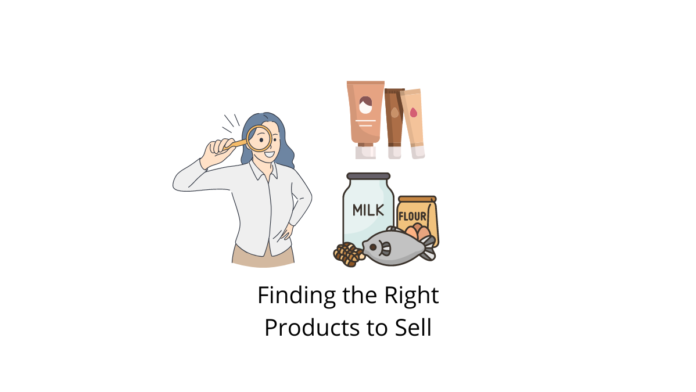For the average consumer, very little thought goes into the products retailers choose to stock. After all, the only thing that truly matters is what you’re looking for and whether they have that product in stock.
Well, what many people fail to recognise is that a lot of thought goes into what products are stocked by retailers. It’s not a simple thing of just having goods shipped ad put on shelves. It’s about knowing your target audience, being on top of trends, and bringing it all together to ensure that your business is profitable. So if you are asking yourself, “how do I grow my small local business?”, the answer may lie in your stock list.


So, how do stores go about finding the right products to stock? And is it as easy as one would assume it is?
Looking at Profitable Products by the Numbers
We could go on and on about how important retail sales are and the impact the right products have on your bottom line, OR we could use numbers to prove just how important it really is for your business.
- 17% of retail sales come from the e-commerce space
- 31% of brands are looking to expand their retail footprint this year
- 46% of brands are looking to increase their investment in a showroom setup
- 32% of retail customers are looking for experiential retail experiences
- Around 82% of all Gen Z consumers go to physical stores to discover new products
- 50% of brands have a presence both online and in physical stores
- 81% of brands will be increasing their investment in mainstream selling
- 49% of brands will be increasing their investment in social commerce
- 47% of consumers want to do their research online before making an in-store purchase
- 53% of brands are looking to expand their platform to allow for selling from any location
12 Strategies for Finding the Most Profitable Products
Obviously finding the most suitable products require some forethought and effort. To help you get started, we’ve got a few things you can do to get the upper hand. These strategies are the perfect starting point:
- Identify customer pain points and find products that are able to address these needs. Bonus points if it’s not stocked by other nearby stores.
- Think about trending hobbies and the items needed to best enjoy them, this will ensure that customers actually buy the product.
- Go with what you know, the things you are passionate about, and the things you will be able to talk about without falling over your words. Plus, it will solidify your space in a niche market.
- Consider topics and items that you are experienced in, something you’ll know more about than the average person, and be able to advise customers on what would best meet their needs.
- Keep an eye on emerging trends and try to capitalize on opportunities before other brands catch wind of it. Sounds tricky, but it’s definitely doable. Google Trends, Reddit, Trend Hunter, and social listening tools will all be beneficial when it comes to this.
- Read customer reviews on your products as well as that of your competitors to see what works, and what doesn’t.
- Do your keyword research to determine what is trending and what products are in demand. This can also identify emerging trends and potential booms. Tools such as Keyword Tool, Sonar, Keywords Everywhere, Helium 10, Alibaba Hot Keywords, Industries Keywords, and EtsyRank are our top recommendations.
- Test the waters before going all in, and take a look at the reception the product in question gets. If people aren’t interested, it will save you money in the long term. Limited supply is also appealing to shoppers, as having something that no one else has always ensures bragging rights.
- Research related products to the things that you already stock. This will be less of a stretch in terms of interest and will appeal to your existing target market.
- Consider products with a higher profit margin to help boost your revenue and overall sales. This one is pretty obvious when you think about it.
- Visit online marketplaces to see what’s trending and what people are actually buying. This will guide you in identifying potential gaps in the market. From Amazon to Etsy and even Kickstarter all have the ability to do so and are fairly easy to access.
- Never become complacent, stay on your toes and always be on the lookout for new and exciting products that you can stock. You cannot risk becoming too comfortable in the competitive retail space, it could spell disaster for your brand.


Products Determine the Success of Your Business
It’s a no-brainer when you think about it. Your retail business relies on customers to thrive. These customers need to actually be interested in your products, otherwise, the stock will sit, your profits diminish and your reputation in the industry dwindle.
So, if you haven’t already, start researching your existing products, related products, and the room for growth that exists in your industry. And when in doubt, look at what your competitors are doing. Don’t copy them but use them to identify gaps in the market.
The bottom line is… When it comes to the success of your retail store, you need to have the right products. If you don’t, it could be the end of your business – or bring it to the brink of disaster in any case. Maintain your competitive edge by stocking the goods your audience is looking for, your cash flow and bottom line will thank you.











